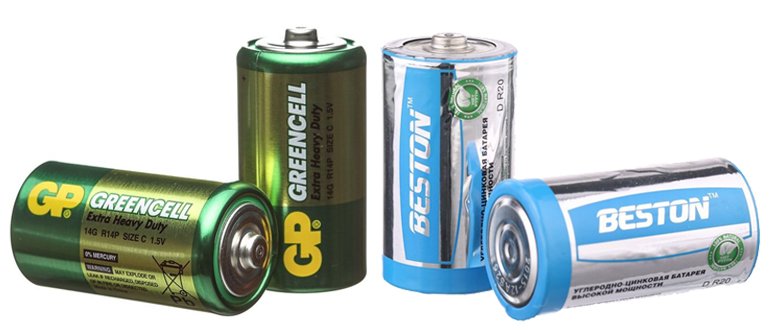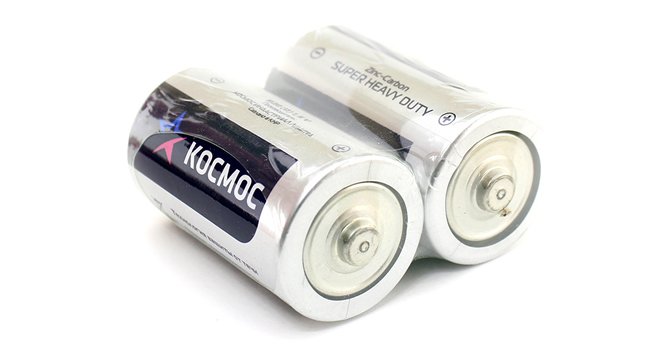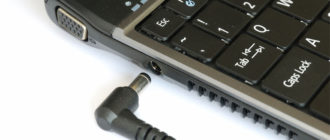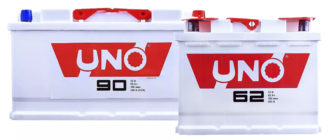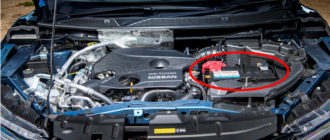The R20 battery is one of the first portable DC sources developed by the industry. They appeared in the 1898 century and are still widely used.
Content
R20 Battery Specifications
Coal-zinc (salt) cylindrical power supply type D according to the ICO specification are designated R20. According to the ANSI standard, this battery is designated 13D, and according to Soviet standards - the 373 battery (until the early 1960s - 1-KS-U3).
The terminals of the electrodes of this battery are located at the ends of the cylindrical body with the following dimensions:
- anode (plus): diameter - up to 9.5 mm, with a contact pad height of at least 1.5 mm;
- cathode (minus): contact pad with a diameter of at least 18 mm.
Batteries R20 has the following parameters:
- dimensions: height - 61.5 mm, diameter - 34 mm;
- weight: about 66 grams;
- electromotive force (voltage) - 1.5 volts;
- typical capacity is 4000 mAh;
- shelf life - up to 2 years;
- operating temperature range: from 0 to +40 degrees Celsius.
Salt elements are cheap, but have satisfactory technical characteristics: their voltage and capacity drop very much during operation, at low temperatures they generally stop working.
Battery Analogs R20
Fully identical to R20 batteries are alkaline batteries. Lr20. Also on the market you can find nickel metal hydride (HR20) and nickel-cadmium (KR20) batteries that have a lower voltage of 1.25 volts with a capacity range from 2000 to 12000 mAh. They can replace the R20 battery without any problems.
Rechargeable lithium-ion batteries of size 32600 (diameter - 32 mm, height - 60 mm) have similar dimensions, but they have a voltage of about 3.7 volts with a capacity of 3000-6000 mAh.
In case of emergency, the 32600 battery can be used in pairs with a dummy connected in series, which will approximately correspond to the voltage of two R20 batteries connected in series (2x1.5v = 3 volts).
In addition, there are identical in size powerful disposable lithium batteries ER20 (according to IEC standard), available for professionals: these are lithium-thionyl chloride (Li-SOCl2) batteries ER34615 with a voltage of 3.6 volts, a capacity of about 20,000 mAh; able to work at temperatures from -55º to 85ºС. They also need to be used with a dummy.
Battery Applications
The D-R20 galvanic cell is widely used to power devices that need a constant low current:
- musical centers, radio tape recorders and tape recorders;
- old types of radios;
- portable radio stations;
- equipment with electric motors;
- geysers;
- professional geiger counters;
- powerful spotlights;
- analog voltmeters.
Due to the large capacity, they are also used in military equipment, in NATO countries such batteries have special designations: 6135-99-464-1938 (saline) and 6135-99-109-9428 (alkaline).
Can I charge the R20 battery
Unlike rechargeable batteries, R20 batteries cannot be charged. This is due to the peculiarity of their design, which does not allow to restore their electrochemical properties by charging.
Failure to observe this precaution could result in damage to the battery case and leakage of electrolyte, or even explosion.
Popular manufacturers and their features
Properly selected power sources can work several times longer than cheap and low-quality ones. In addition, current sources made with technology disruptions can damage expensive devices due to electrolyte leakage.
Many companies produce R20 batteries, but to be sure of the quality of the purchased power sources, it is better to use the products of reliable companies.
- Panasonic
- Duracell
- Camelion
- Varta;
- Maxell
- Trophy
- Kodak
- Minamoto.
Batteries Cosmos or Supermax will cost significantly less, but their quality will be lower.
What to look for when purchasing
When choosing power sources, you need to pay attention to the quality of workmanship, you need to check that the batteries are not expired, because every year they lose capacity.
High-quality batteries must be hermetically sealed, which protects them from moisture and air, there should be no damage to the case, no signs of electrolyte leakage.
Sometimes on the shelves you can find fakes for well-known brands, which can be distinguished by carelessly applied markings, poor packaging, errors in the inscriptions.
High-quality products must be made carefully, with well-readable markings, an indication of the shelf life and date of manufacture, and the manufacturer's markings.

